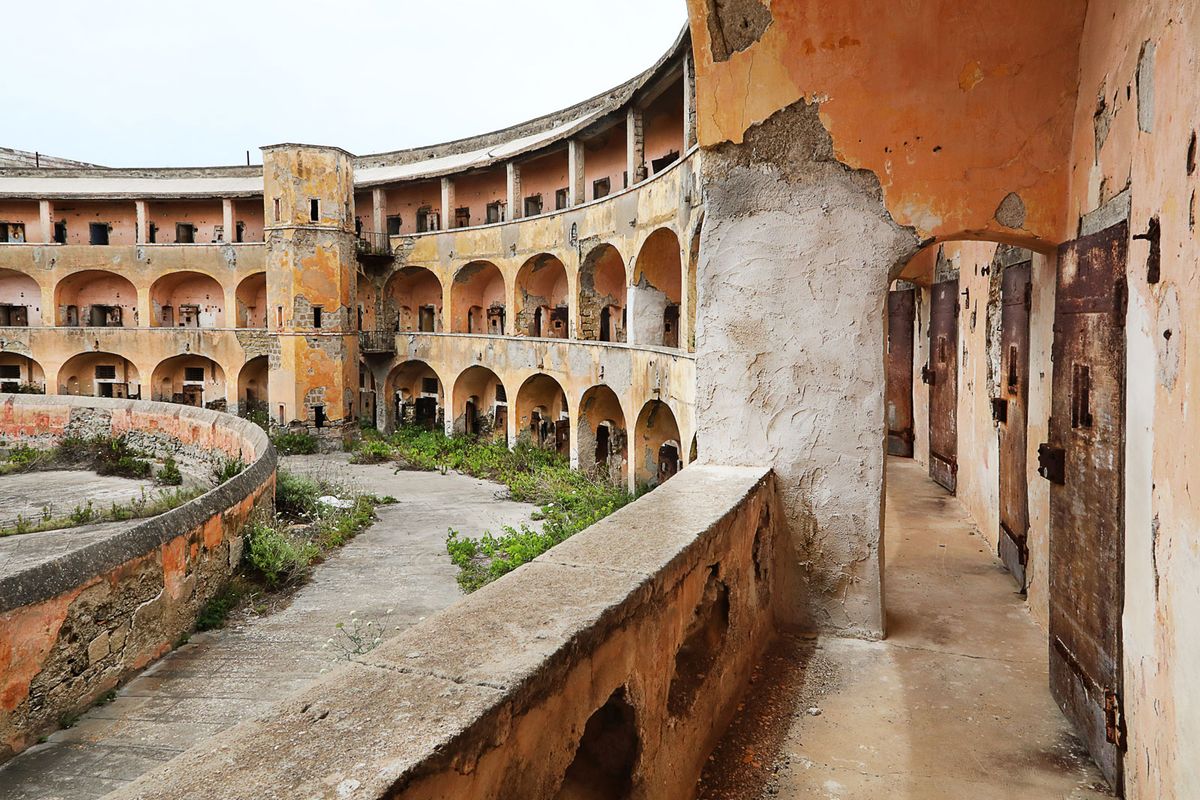Italy is creating an “academy” for training the next generation of European leaders, which will be built from the ruins of an 18th-century prison on the tiny island of Santo Stefano. The state-funded project will be named after David Sassoli, the former president of the European Parliament, who died on 11 January.
Silvia Costa, the government commissioner overseeing the building’s renovation, and the Italian culture minister Dario Franceschini proposed adopting Sassoli's name for the project on 17 January. Prime Minister Mario Draghi immediately approved the proposal, according to a statement.

The former prison sits on the island of Santo Stefano, off the Neopolitan coast Commissario straordinario del Governo per il recupero e la valorizzazione dell’ex Carcere borbonico dell’isola di S.Stefano-Ventotene
The prison was commissioned by the Bourbon King Ferdinand IV of Naples and completed in 1797. Its horseshoe shape was based on an unrealised design by the social theorist Jeremy Bentham’s for a “panopticon” in which prisoners placed in cells arranged in a circle could be monitored from a central observation tower. (A type of panopticon also features in the Batman films).
Italian governments used the prison for many years, while exiling some opponents to Ventotene, a slightly larger island 2km away. In 1941 Altiero Spinelli and Ernesto Rossi, anti-fascist exiles, wrote the Manifesto of Ventotene, which called for a socialist federation of Europe and became a founding text of the European Community. The prison was closed in 1965.
Today, Ventotene hosts political summits and EU-themed youth initiatives such as Italy’s School of Europe, and pro-European pilgrims flock to Santo Stefano. The renovated prison—which will feature an open-air museum recounting the site’s history, a lush garden, conference rooms and accommodation for 25—will integrate with Ventotene’s offering by hosting guided tours, events and seminars on political and environmental themes. Additionally, the prison will offer a small number of artist residencies. “We felt that the silence and remoteness of this place would be a source of inspiration for artists, just as it was for its political prisoners,” Costa tells The Art Newspaper.
Announced in 2016, the project began in earnest following the appointment of Costa, formerly a member of the European Parliament and president of its Committee on Culture and Education, in January 2020. Emergency work on securing the buildings began in November 2020 and the winner of a tender notice for the architect of the renovation will be announced in the coming weeks, Costa said. Meanwhile, Costa's team has created a network of research partnerships, including with Rome’s Sapienza and Roma Tre universities, Florence’s European University Institute, the Italian National Agency for New Technologies, Energy and Sustainable Economic Development and the Italian National Institute for Environmental Protection and Research.
Once operational, the prison and its programme of events will be managed by a foundation that could draw on both public and private funds. Much of the site’s income is expected to be self-generated. It is anticipated to draw 36,000 visitors every year, as well as 500 annual resident students and 5,400 audience members for events, concerts and conferences.


